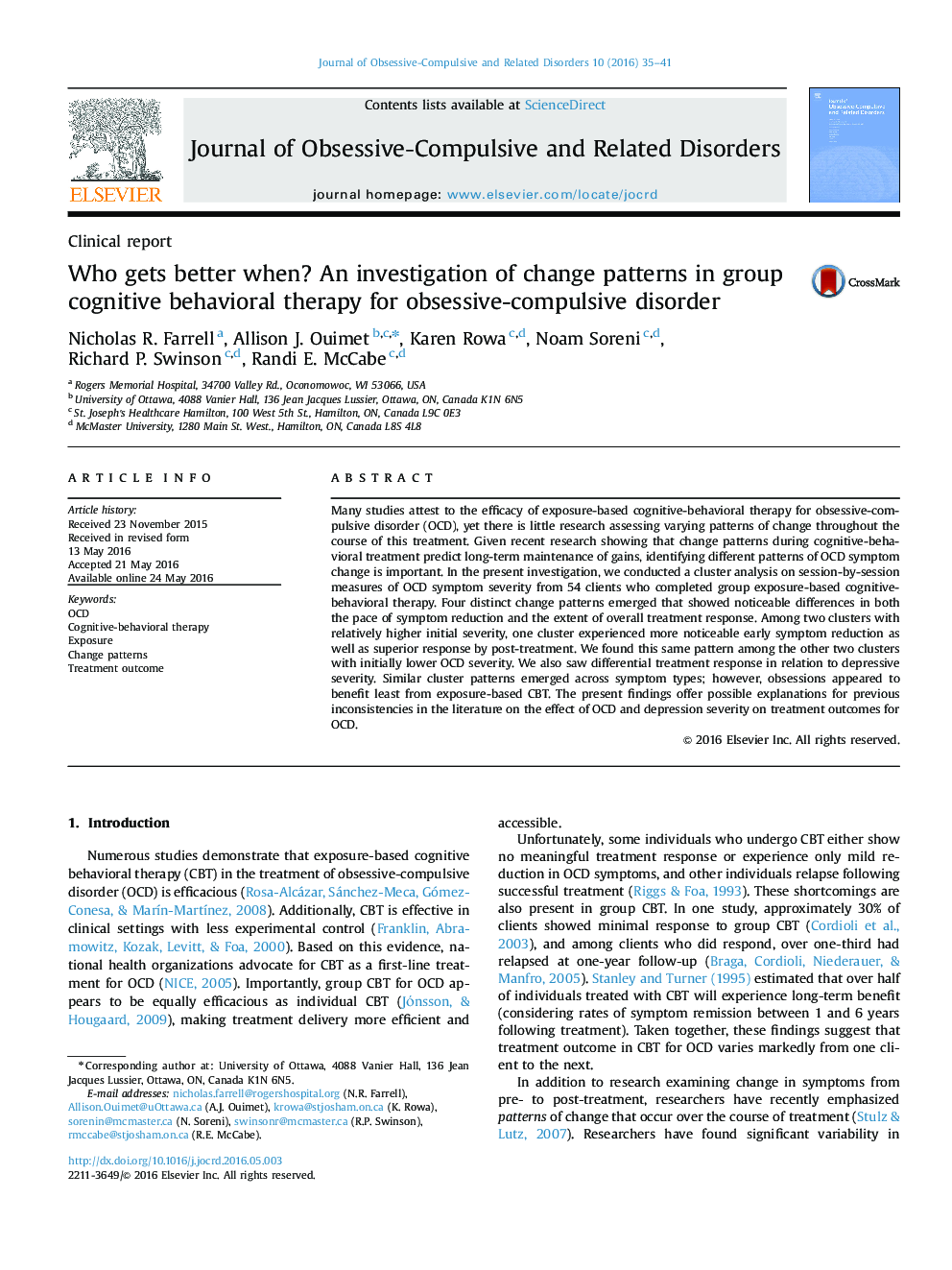| Article ID | Journal | Published Year | Pages | File Type |
|---|---|---|---|---|
| 912171 | Journal of Obsessive-Compulsive and Related Disorders | 2016 | 7 Pages |
•Exposure and response prevention (ERP) for OCD is effective in a real-world setting.•People who complete 8 of 12 treatment sessions show different change trajectories.•Early symptom change, but not OCD severity, was related to overall better outcome.•Depression severity impacted change differently for low vs. high OCD severity.•Obsession symptoms benefitted least from ERP-based cognitive-behavioral therapy.
Many studies attest to the efficacy of exposure-based cognitive-behavioral therapy for obsessive-compulsive disorder (OCD), yet there is little research assessing varying patterns of change throughout the course of this treatment. Given recent research showing that change patterns during cognitive-behavioral treatment predict long-term maintenance of gains, identifying different patterns of OCD symptom change is important. In the present investigation, we conducted a cluster analysis on session-by-session measures of OCD symptom severity from 54 clients who completed group exposure-based cognitive-behavioral therapy. Four distinct change patterns emerged that showed noticeable differences in both the pace of symptom reduction and the extent of overall treatment response. Among two clusters with relatively higher initial severity, one cluster experienced more noticeable early symptom reduction as well as superior response by post-treatment. We found this same pattern among the other two clusters with initially lower OCD severity. We also saw differential treatment response in relation to depressive severity. Similar cluster patterns emerged across symptom types; however, obsessions appeared to benefit least from exposure-based CBT. The present findings offer possible explanations for previous inconsistencies in the literature on the effect of OCD and depression severity on treatment outcomes for OCD.
